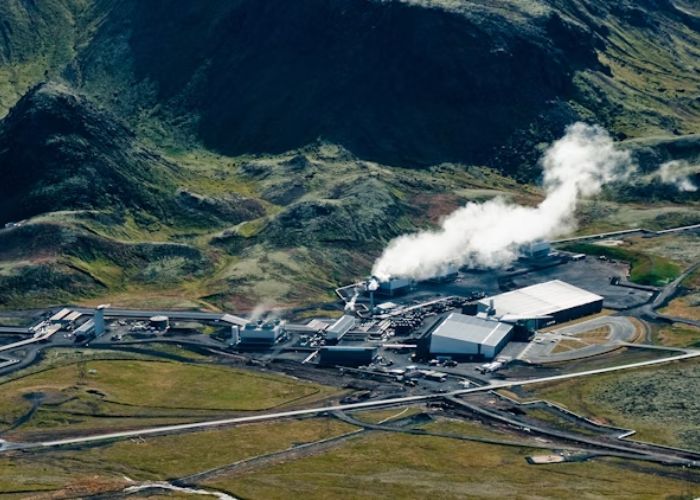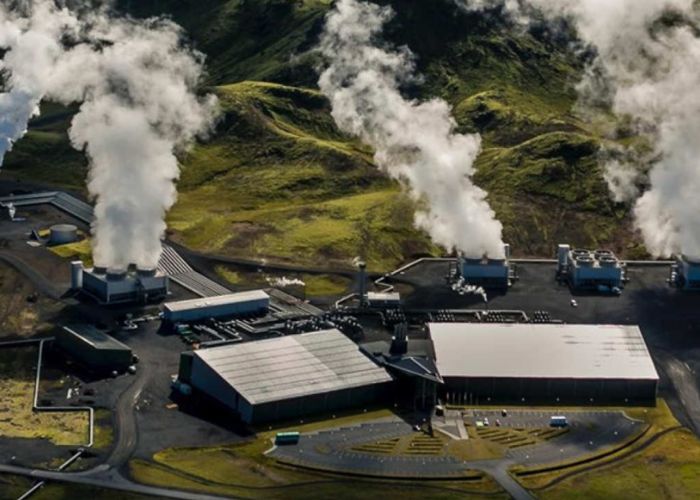As an electrical engineer with over 7 years of experience working in the geothermal energy industry, I was excited to learn about the recent updates and expansions at the Hellisheiði Power Station in Iceland. This facility, located just outside Reykjavik, is a vitally important source of renewable energy for Iceland and an impressive display of geothermal technology. Let’s read below about “Hellisheiði Power Station – Iceland’s Important Geothermal Facility Updates A Vast Geothermal Resource”.
During my recent trip to Iceland, I toured the Hellisheiði plant to see firsthand how this massive geothermal operation has grown. With my background in power plant design and operations, I was fascinated by the sheer scale and efficiency of Hellisheiði. In this article, I’ll share key details and updates from my educational tour of this pioneering Icelandic facility.
Hellisheiði Power Station – Iceland’s Important Geothermal Facility Updates
A Vast Geothermal Resource
The Hellisheiði Power Station sits atop the Hengill volcanic system in southwest Iceland. This geologically active area provides immense, readily accessible amounts of geothermal resources to tap into. Magma churning below the surface heats underground water reservoirs to temperatures over 200°C. Wells drilled into this superheated water and steam provide the thermal energy that powers Hellisheiði’s turbines.
Iceland’s location along the Mid-Atlantic Ridge makes it a global hotspot for geothermal activity. The Hellisheiði region offers ideal conditions, with shallow hot water reservoirs, porous underground connections, and an extensive fissure system. This combination allows for high-volume geothermal fluid extraction and effective reservoir management, which are key factors for scalable long-term power generation.
Phasing in Expansions
The Hellisheiði Power Station has undergone several staged expansions since initial construction in 2006. Early phases established the main geothermal wells, gathering system pipelines, and the first 30MW turbine. As nearby drilling identified more resource capacity, two additional 30MW turbines came online in 2010.
According to mdpi, When I visited in 2022, the plant had recently activated its latest 30MW turbine, boosting the facility’s generation capacity to 210MW. But more expansions are already in progress. Construction is underway for an additional 90-100MW turbine expected to begin operations in 2024. Once complete, Hellisheiði will deliver over 300MW of reliable renewable electricity to Iceland’s grid.
Advanced Technology
In addition to sheer size, I was impressed by the advanced technology enabling Hellisheiði’s productivity and efficiency. The plant utilizes both dry steam and flash steam processes to convert geothermal fluids into electricity. This dual approach maximizes output from the available resource conditions.
Read More:- Kusile Power Station – South Africa’s Modern Coal Power Updates
The latest turbine additions use Ormat Energy Converters, which operate at lower pressures and temperatures compared to traditional geothermal turbines. This innovative design broadens viable fluid profiles for power generation. It also improves the turbine’s operating flexibility to handle fluctuations in steam conditions.
Hellisheiði also employs extensive heat exchanger stations to recover waste heat. Hot geothermal fluids leaving the turbines run through fan coolers, transferring their residual thermal energy to freshwater. This produces over 300 liters-per-second of up to 90°C water that is piped to Reykjavik to heat homes and businesses. Nothing goes to waste!

Advanced Monitoring
Operating a geothermal plant sustainably requires careful monitoring of subsurface conditions. Over-extraction can deplete precious geothermal reservoirs. The Hellisheiði team utilizes comprehensive modeling and measurement to manage its resource utilization.
An array of specialized borehole and downhole sensors track temperatures, pressures, fluid flows, and steam chemistry throughout the geothermal system. This data feeds into sophisticated reservoir simulation software that helps optimize fluid volumes and injection well placements. The goal is to achieve a balanced energy output while maintaining reservoir pressures and geothermal fluid recharge rates.
The plant also monitors surface emissions like hydrogen sulfide and carbon dioxide, which are natural byproducts of geothermal systems. Low-impact reinjection techniques help keep atmospheric releases well below safety thresholds. Virtual pipeline technology even converts some carbon dioxide into stable carbonate minerals!
Positive Local Impact
Geothermal projects like Hellisheiði provide more than just renewable electricity. They also create positive local economic impacts through job creation, infrastructure investment, and revenue streams. Iceland understands this well, with geothermal energy currently supplying over 66% of the country’s total primary energy use.
Read More:- Hornsea Project One – UK’s Largest Offshore Wind Farm News
The Hellisheiði Power Station employs around 80 full-time staff. Geothermal facility operations require power engineers, geologists, technicians, construction workers, drillers, and more. Many employees live in the nearby community of Hveragerði. This town was originally built up around Iceland’s first geothermal heating plant constructed in the 1940s.
Beyond direct jobs, Hellisheiði’s expansion boosts investments in civil works, roads, maintenance buildings, and transmission connections. Revenue from electricity sales and operational contracts also flows back to the community. Geothermal plants like Hellisheiði form a cornerstone of Iceland’s economy.
Conclusion
The Hellisheiði Power Station exemplifies Iceland’s world leadership in geothermal technology. Its strategic resource management and phased growth blueprint provide models for sustainable development. As an engineer, I appreciate Hellisheiði’s innovative equipment upgrades and extensive monitoring networks. This operational excellence allows the plant to maximize productivity from a finite geothermal resource.
With climate change driving an urgent need for renewable energy, Iceland’s vast untapped geothermal potential can make a global difference. Hellisheiði is proving that large-scale geothermal power is not just feasible but also practical and profitable. I look forward to seeing what new advances Iceland’s geothermal expertise will unlock next. The future is green and hot! I hope you like reading “Hellisheiði Power Station – Iceland’s Important Geothermal Facility Updates A Vast Geothermal Resource”.

Mohsen Ali is a Chemical Engineer with over a decade of experience in the energy sector. Specializing in power plant efficiency and sustainability, he brings expert insights to borderpowerplants.org. Mohsen holds a Master’s degree in Chemical Engineering and is dedicated to advancing sustainable energy solutions. Connect with him on Instagram or LinkedIn for more insights.
